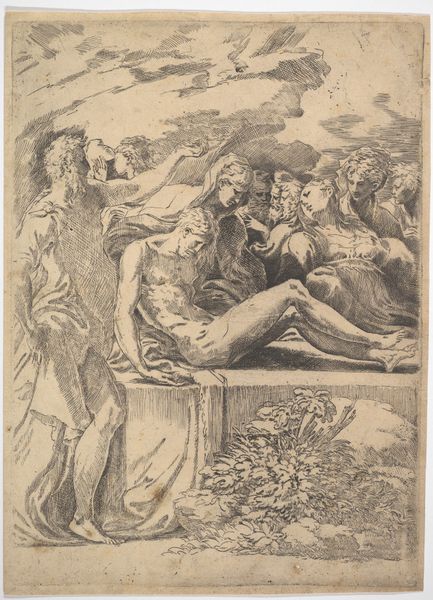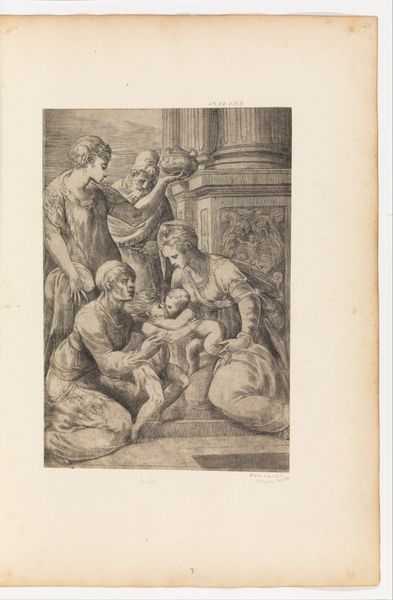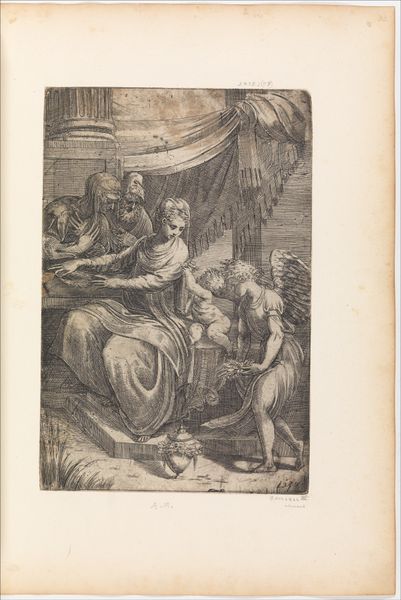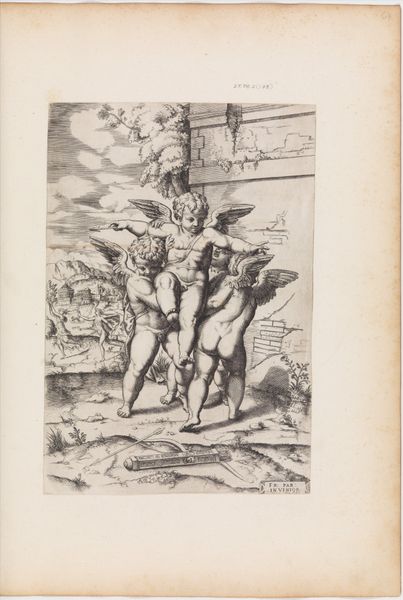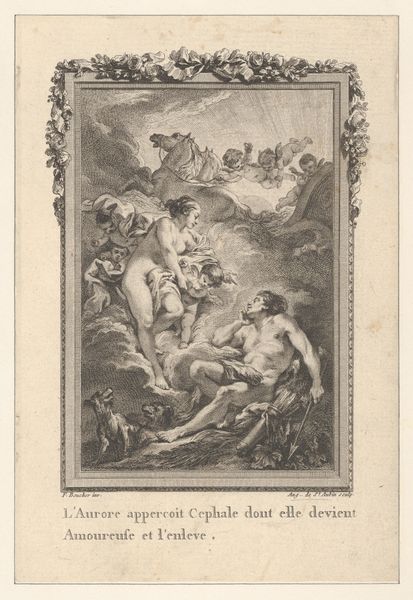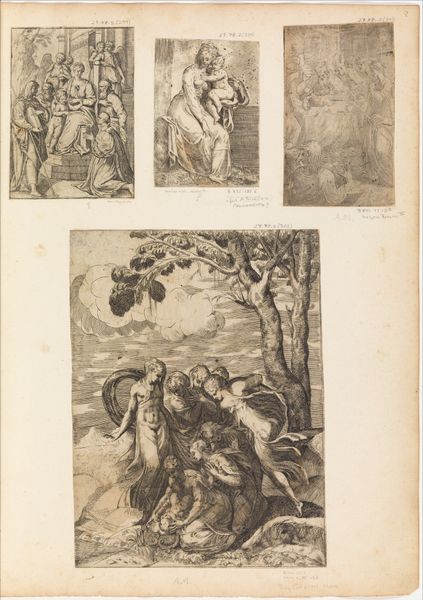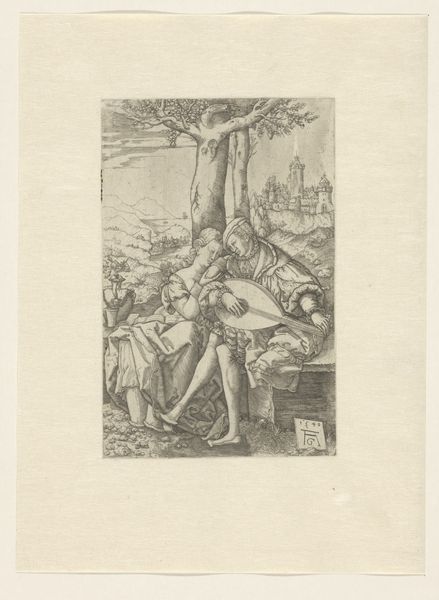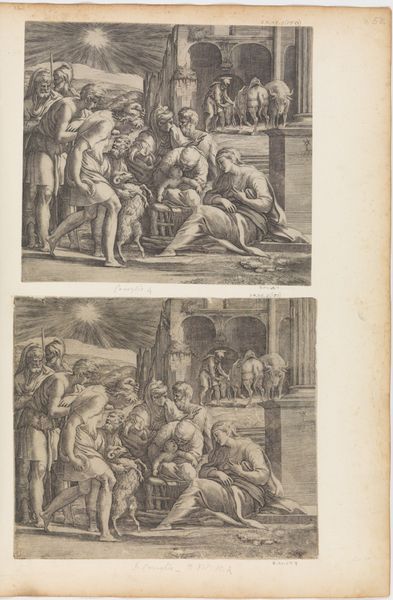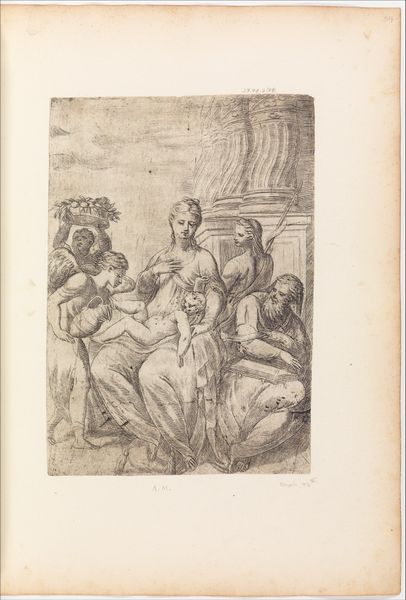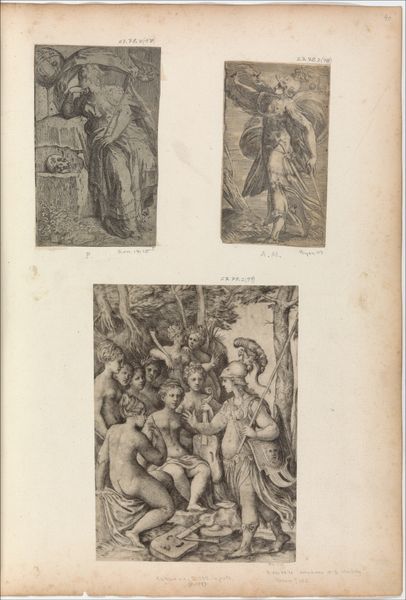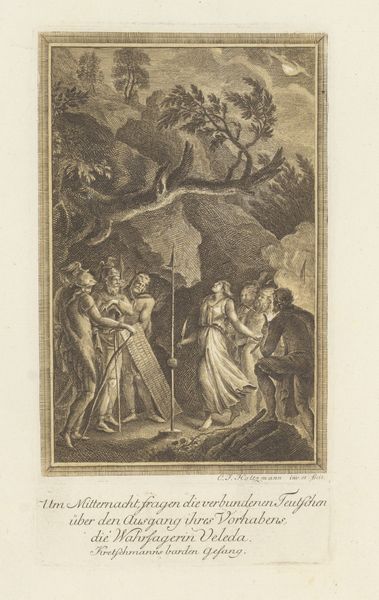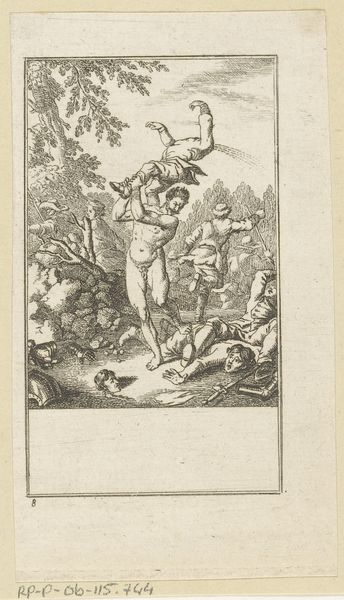
drawing, print, intaglio, engraving
#
drawing
# print
#
intaglio
#
figuration
#
history-painting
#
italian-renaissance
#
engraving
#
christ
Dimensions: Sheet: 13 in. × 9 7/16 in. (33 × 23.9 cm)
Copyright: Public Domain
Editor: So this is Parmigianino's "Entombment Facing Right", made around 1529 or 1530. It's an engraving, so printed from an incised metal plate. I find the image both serene and sorrowful. What draws your eye when you look at it? Curator: The technique is key. Think about the labour involved in producing this image. The artist meticulously carves into the metal. This isn’t just about depicting Christ's entombment; it’s about the act of reproduction. The print allowed for the widespread circulation of this scene, a new form of visual consumption emerging at the time. Do you see how this changes the artwork's relationship with its audience? Editor: I see. So it’s not just a religious scene, but a mass-produced object, influencing how people engage with the story of Christ's death… almost a commodity? Curator: Exactly! Consider the economics. Prints were more affordable than paintings. Workshops could produce multiples, impacting patronage and artistic identity. The engraver's skill becomes a valuable asset, traded and admired within a new system of artistic production. Also, notice the composition --it reflects the mannerist style. How is he manipulating materials to show movement, emotion and dynamism to reinforce a historical record? Editor: That’s fascinating. I hadn't thought about it in terms of materials and labor turning piety into distribution. The process itself gives the image another dimension. Curator: Precisely! By examining the materials and mode of production, we see the “Entombment” as more than just a depiction; it’s a product of its time, deeply embedded in social and economic structures. It truly complicates how we appreciate it.
Comments
No comments
Be the first to comment and join the conversation on the ultimate creative platform.
